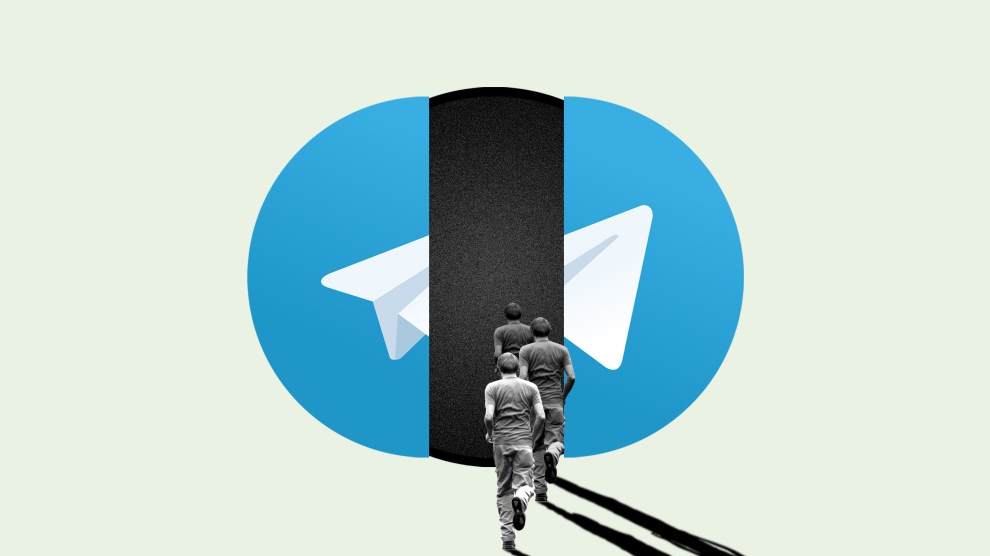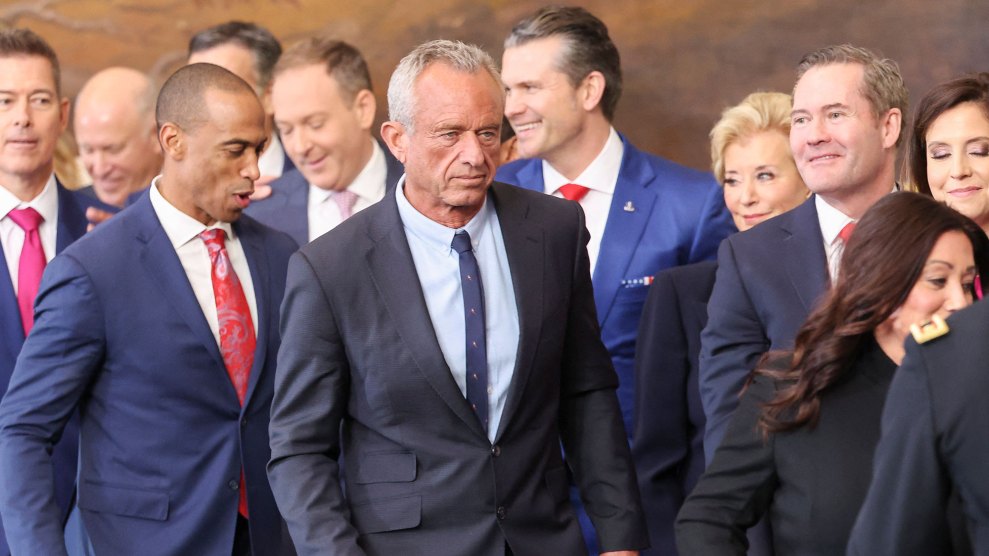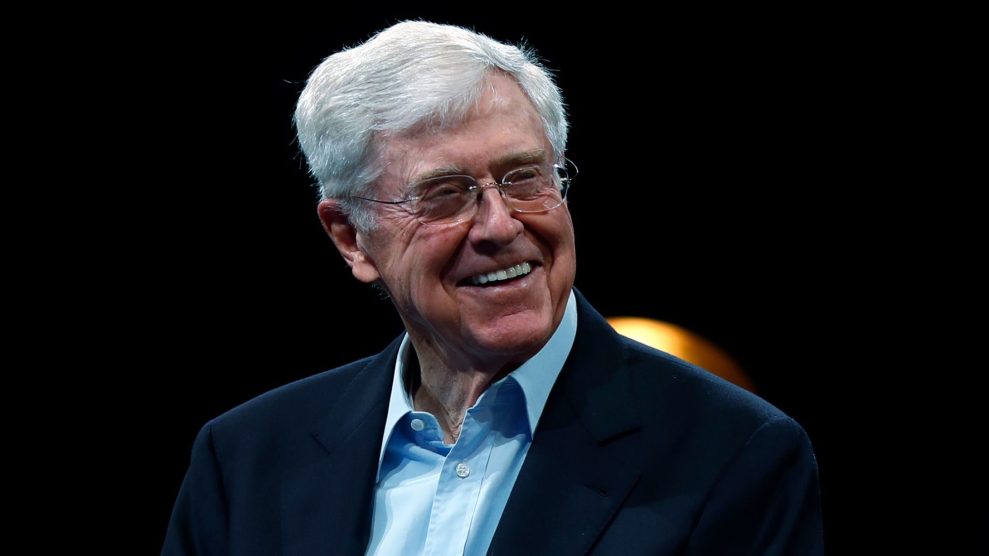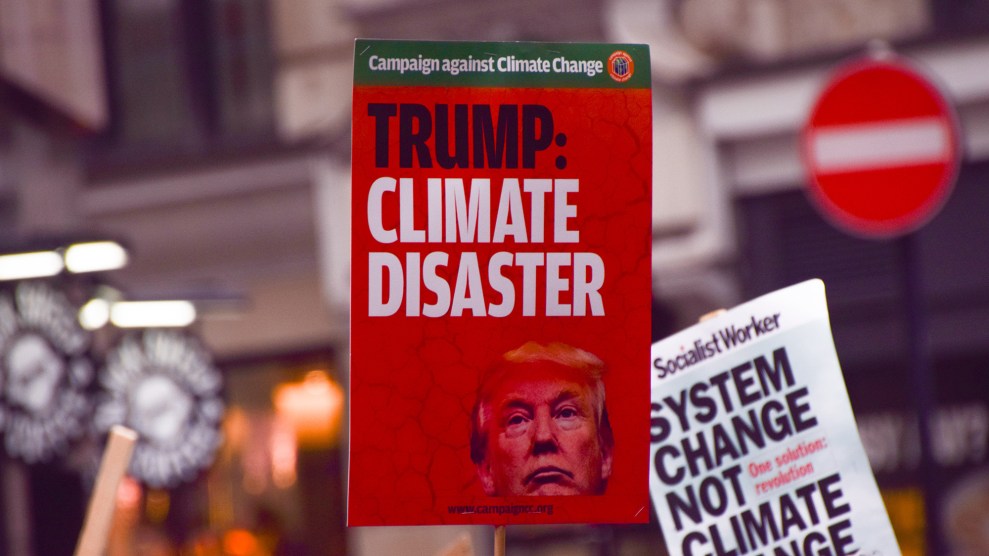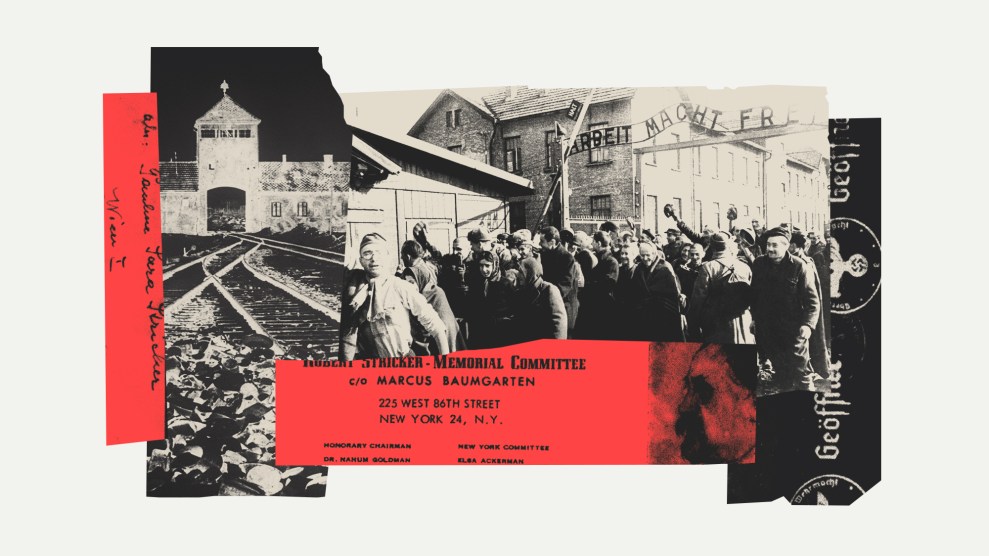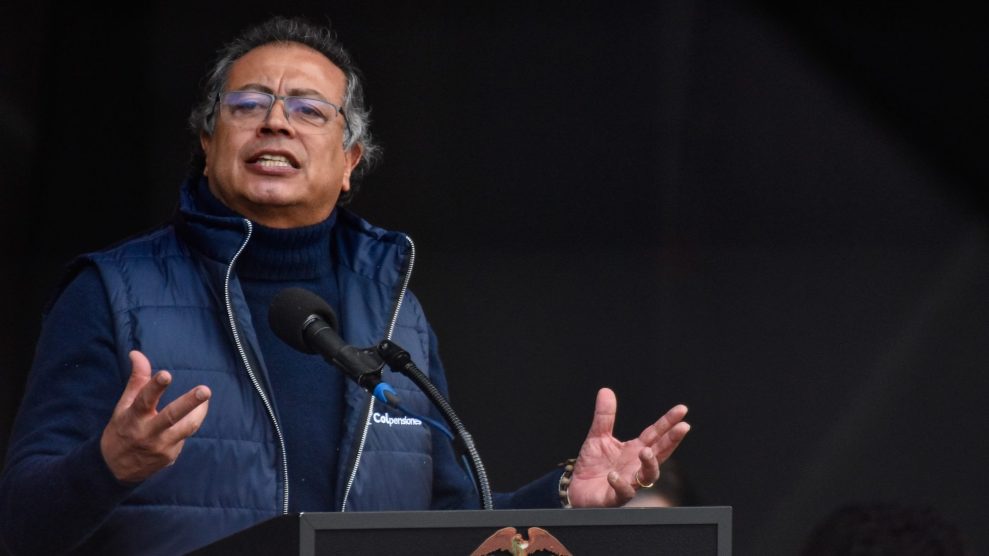
Mother Jones; Unsplash
Every so often, the spiritual center of the internet shifts, as the locus where online culture is shaped and incubated before rippling out into the wider world cycles to a new home.
Today, that shift is happening again, with Telegram taking the main stage. In recent years, the messaging app and digital platform has recurringly become the place for the rawest, most direct coverage of massive international crises, first with Russia’s invasion of Ukraine, and now with Hamas’s October 7 attack and Israel’s subsequent month-long massacre of thousands of Palestinians in Gaza.
The app lets users opt-in to encrypted messaging, which helps explain why high-profile and dangerous movements and events have been organized there, including the January 6th storming of the US Capitol. The far-right and neo-Nazis have used Telegram to plan and recruit both in the US and abroad; this fall, organizing and communication on the platform reportedly sparked antisemitic violence against Jewish people in Dagestan, Russia, and may have played a part in exacerbating Azerbaijani violence against Armenians.
With 800 million accounts, Telegram ranks towards the bottom of the top ten social media platforms in users. But its influence exceeds this position. “Nearly all conflict visuals are now just downstream from Telegram, the same way news on Facebook/Instagram used to be collected from Twitter,” tweeted New York Times visual investigations journalist Aric Toler on October 11, as new images from the October 7 attack and Israel’s airstrikes on Gaza poured on to the broader internet after first appearing on the platform. (Toler, in his prior job at Bellingcat, helped pioneer open source intelligence reporting.)
Everyday people also find the app indispensable. Darren Loucaides, who has written extensively about Telegram, chronicled in a piece for Wired how during the heat of the October 7 attacks, in the earliest moments, when Israeli media and the government hadn’t shared much information, Telegram was the only source giving civilians insight.
That speed is a big part of the app’s appeal. Journalists need to verify the information they publish, which is a process that can slow down their stories. Telegram users are held to no such code, and can immediately post whatever they come across. Telegram also doesn’t censor gruesome images or depictions of violence that are common in conflicts, but that might not make it past the filters of Meta or other major social media companies. And almost no one is banned from Telegram, which not only makes it a ripe venue for influence operations, but gives groups barred on other social media a place to communicate—including Hamas, whose own posts in the earliest hours of the October 7 attacks were one of the main sources of information about what was happening in Israel. In repressive regimes like Russia, where almost every other form of social media is subject to state control, the app can also be a rare place to freely share and find information, making it indispensable to dissidents or anyone not completely in line with the state.
Telegram’s ascent has been long but steady. Pavel Durov, a programmer and entrepreneur, launched the company in 2013 after being ousted from VK, the Russian Facebook competitor he co-founded. Telegram spent years as a moderately popular messaging app and platform, but gained momentum in 2021 after users of WhatsApp fled following privacy policy updates, wrongly believing they would have to fork over more personal data to keep using the Facebook-owned messaging service. Downloads for Telegram spiked in what Durov then proudly proclaimed might be “the largest digital migration in human history.”
In the US, some of the first significant digital mobilizing efforts on Telegram may have been conducted by the far-right, who had been hopping from platform to platform after major tech companies cracked down on them following 2017’s Charlottesville rally. A hodgepodge of conservative anti-vaxxers, QAnoners, JFK-will-return cultists, eco-fascists, Proud Boys, and neo-Nazis mingled on the app, recruiting and organizing different actions, from, as mentioned, planning aspects of January 6, to inundating hospitals with calls objecting to certain covid treatments. A similar dynamic unfolded in Europe, where the Institute for Strategic Dialogue, a Berlin-based non-profit, documented how Telegram has become the preeminent platform for the far-right in Germany, Austria, and Sweden.
But Telegram has become widely adopted beyond the political fringes, especially in countries with repressive surveillance regimes, and has emerged as a hub of information on international conflicts. During Russia’s invasion of Ukraine, the app has proven a vital source of information for residents of both countries—so invaluable that Russian activists who may have been arrested after police infiltrated the app keep using it after being released, as Loucaides has also documented. Since Hamas’ attacks on Israel, research from the Atlantic Council’s Digital Forensic Research Lab found Telegram channels related to Hamas accrued hundreds of thousands of new followers.
“It was a window into all these parts of the world,” says Ben Ditto, a cultural analyst and visual artist who often mines Telegram for content for his own social media accounts. They include a Telegram channel Ditto created five years ago, after what he saw as onerous moderation by Instagram repeatedly left his content downranked. As Russia invaded Ukraine, he realized how much of that war could be seen on Telegram. He discovered Ukranian far-right and anarchist group chats where he could directly observe conversations and see content that was posted almost immediately after being filmed on the ground. “It’s an amazing way of being closer to the source than anything else,” Ditto explains.
Telegram’s raw, unfiltered nature makes it ripe for manipulation and potential influence campaigns. During the October 7 attacks, Hamas used the channel to quickly disseminate footage foregrounding military acts by their fighters, waging a narrative campaign designed to spread fear in Israel on a platform notorious for leaving almost anything aside from the baldly illegal—like child abuse content—alone. While Ditto has found Igor Girkin’s and Wagner PMC’s Telegram channels to be useful sources on what’s happening inside Russia, he says the former Russian FSB officer and private Russian military group’s posts need to be read with skepticism since they are likely to engage in propaganda and influence campaigns.
To a lot of people who use Telegram, the trade-off between the lack of moderation and the breadth of what’s available is worth it. Jake Hanrahan, the founder of Popular Front, a multimedia publication that also aggregates conflict footage on its social media channels, told me over Telegram that in his view the platform is “one of the single most important services online right now.”
“Due to the lack of monitoring fake stuff will show up on Telegram maybe more regularly, however, that’s just life,” he said. “It’s very dangerous to look to someone like Mark Zuckerberg to do your due diligence for you, which is basically what the censorship issues on Instagram boils down to.”
Meta does take guidance from governments when blocking groups from its products. These moderation decisions are often in line with the Western political consensus, with the Taliban, for example, remaining banned despite it being the governing body of Afghanistan.
“[Meta] is regularly censoring reporting that shows how brutal the IDF are in their current mission to flatten Gaza,” Hanrahan says. “Meta had been doing this for years though. Every conflict, they pick a side that’s allowed and everyone who doesn’t fall in line has to suffer the consequences of shadow bans or having your page removed.”
Since October 7, Meta users posting pro-Palestine messages have reported being censored on Instagram and Facebook—as have users of ByteDance’s TikTok—prompting a complaint from civil society groups. Asked for comment, a Meta spokesperson pointed to a company page on the ongoing conflict where the company writes there is “no truth to the suggestion that we are deliberately suppressing voice.” But a human rights review commissioned by the company after a 2021 outbreak of violence in Israel and Palestine found that Palestinian users had suffered “over-enforcement” that impinged on “freedom of expression, freedom of assembly, political participation, and non-discrimination.”
Hanrahan says that he had dealt with the downsides of Meta moderation directly. Roughly three years ago, Popular Front was frequently posting on Instagram about Turkish attacks on the Kurdish area of Afrin in Syria; Hanrahan recalls the publication’s account was removed from the service four times in a month. “Eventually someone at Meta privately reached out to me and told me a Turkish ultranationalist who works there was purposely banning our account. I can’t confirm this was true, but he told me he’d put a note on the account to stop the arbitrary bans and said he withdrew that guy’s access,” Hanrahan said.
A Meta spokesperson did not address what happened to Popular Front’s acccount, but claimed in an emailed statement that the company’s content moderation is not supposed to work this way. “Our policies are designed to give people a voice while keeping them safe on our platforms, and we apply these policies regardless of who is posting or their personal beliefs,” the spokesperson wrote.
Hanrahan estimates that 20 percent of the conflict footage Popular Front aggregates onto its social media channels (including Telegram) comes from Telegram. Other conflict footage aggregators and investigators, like the New York Times’ Toler, also draw significantly from the platform.
As Telegram’s popularity has grown, the physics and rules of its platform have shifted overall patterns of how people receive information—and far beyond the aggregators and journalists who make professional use of the service. Because Telegram posts are almost never moderated, it’s solely on the user to determine the veracity of information. Many everyday users don’t, allowing the platform to become a recurring dissemination point for the spread of disinformation.
Telegram has also allowed many distant people to bear witness to the horrors of military invasions and massacres. While Instagram Stories are usually banal updates on people’s day to day lives, users are likelier to post on weightier subjects during social upheaval and local, national, and international conflict. Today, many of the visuals of Gaza being spread on Stories are downstream of Telegram, where, before being posted to Instagram, users had the chance to modify them to have a better chance against the site’s moderation policies.
As Israel has banned foreign journalists from reporting from Gaza and as has killed over 40 journalists there, Telegram provides a means of distribution for journalistically valuable content, including the perspectives of people in Gaza largely cut off from the world. It also gives a rare, direct view into the true ramifications of what’s happening, by transmiting gruesome images of the victims of Israeli missiles that might not have made it past the policies of larger social media platforms.
In “Looking At War,” her Iraq War-era essay exploring the power and limits of conflict photography, Susan Sontag explored how viewers can be left unaffected by images of wartime atrocities: “Flooded with images of the sort that once used to shock and arouse indignation, we are losing our capacity to react.”
That might have held true in the early days of the US’s Global War on Terror. But writing in 2002, she couldn’t have anticipated a world where the public could see images and videos posted directly by people being bombed.
“I think the treatment of Palestinians over the last 75 years has been easier to hide,” Ditto told me. Because of platforms like Telegram, he noted, “you cannot deny what’s been happening anymore—and that’s created a cultural shift.”


